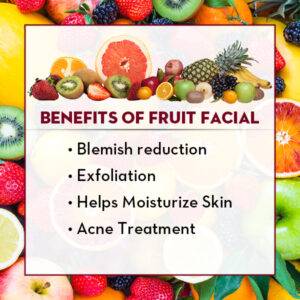This Site Is A Participant In The Amazon Services LLC Associates Program. We may earn money or products from Amazon or the companies mentioned in this post.
Facial fillers and botox are both popular cosmetic procedures, but they work differently. Fillers add volume to areas with lost volume, while botox targets muscles to reduce wrinkles.
These treatments are commonly used to rejuvenate the face and achieve a more youthful appearance. Whether someone chooses facial fillers or botox depends on their specific goals and concerns. Some individuals may benefit from a combination of both treatments for optimal results.
Consulting with a qualified medical professional can help determine the best course of action for each individual.

Credit: skintechnique.com
The Basics Of Facial Fillers And Botox
Facial fillers are injections that add volume to the face, reducing wrinkles and creating a more youthful appearance. Botox, on the other hand, works by temporarily paralyzing the muscles, smoothing out lines and wrinkles. While both treatments provide anti-aging effects, the key difference lies in how they achieve these results.
Facial fillers restore lost volume, while botox targets dynamic wrinkles caused by muscle movements. It’s important to understand the distinctions between these treatments to make an informed decision. Facial fillers offer a non-surgical option for restoring youthfulness, while botox specifically targets dynamic wrinkles.
So, which treatment is right for you? Consulting with a qualified professional will help determine the best option based on your unique needs and goals.
Facial Fillers: Benefits And Uses
Facial fillers and botox both offer various benefits and are commonly used for achieving plumpness and volume. These treatments effectively smooth out fine lines and wrinkles. Moreover, they can enhance facial contours, resulting in a more youthful appearance. Whether you want to target specific areas or overall facial revitalization, both options provide precision.
Facial fillers and botox treatments are sought after because they are minimally invasive and offer immediate results. The choice between the two will depend on your specific concerns and desired outcomes. Consulting with a qualified professional is crucial to determine which treatment is best suited for your goals.
So, whether you opt for facial fillers or botox, these treatments can help you achieve a rejuvenated and more radiant look.
Botox: Advantages And Applications
Botox offers various advantages and applications, one being reducing the appearance of dynamic wrinkles. By temporarily relaxing muscle activity, it can effectively treat crow’s feet, forehead lines, and frown lines. It is a non-surgical alternative for individuals seeking certain facial rejuvenation goals.
With its wide range of applications, botox continues to be a popular choice among individuals looking for a non-invasive solution to combat the signs of aging. Whether it is the desire to smoothen fine lines or achieve a more youthful appearance, botox provides an effective and convenient option.
Its ability to temporarily paralyze muscles in specific areas allows for targeted treatment, resulting in a refreshed and rejuvenated look. Whether seeking preventive measures or corrective solutions, botox can offer a suitable solution for many individuals.
Factors To Consider: Choosing Between Facial Fillers And Botox
Factors to consider when choosing between facial fillers and botox include the duration of results, cost comparison, personal treatment goals and preferences, and potential side effects and downtime. The duration of results varies between facial fillers and botox. While botox typically lasts three to four months, some facial fillers can provide results for up to 18 months.
In terms of cost comparison, botox is generally more affordable per treatment compared to facial fillers. However, the total cost may differ depending on the number of units or syringes required. Personal treatment goals and preferences play a crucial role in deciding between the two options.
Some individuals may prefer the subtle volume enhancement provided by facial fillers, while others may prioritize the elimination of wrinkles and fine lines with botox. It is essential to consider potential side effects and downtime associated with both treatments. Temporary redness, swelling, and bruising are common with facial fillers, while botox may cause mild discomfort or bruising at the injection site.
Consulting with a qualified healthcare professional can help determine the best choice for achieving desired results.
Complementary Treatments: Combining Fillers With Botox
Facial fillers and botox can be combined for a comprehensive facial rejuvenation. This synergistic approach allows for customizable treatment plans. By utilizing both treatments, patients can achieve optimal results. The combination of facial fillers and botox works together to address different aspects of the aging process.
While fillers plump and restore volume, botox relaxes muscles and reduces wrinkles. The two treatments complement each other, providing a powerful solution for facial rejuvenation. By combining fillers and botox, patients can achieve a natural-looking, youthful appearance. Treatment plans can be tailored to individual needs and desired outcomes, ensuring the best possible results.
Whether it’s targeted wrinkle reduction or overall facial rejuvenation, the synergy between fillers and botox is a winning combination.
Consultation And Choosing An Experienced Practitioner
When considering facial fillers versus botox, it is crucial to consult with an experienced practitioner who understands your specific needs. A thorough consultation is essential in determining the most appropriate treatment option. Finding a qualified and reputable practitioner is of utmost importance.
During the consultation, you can discuss your expectations and desired outcomes. This allows the practitioner to tailor the treatment to suit your individual needs. Taking the time to communicate your goals and concerns will ensure that the right treatment plan is developed.
It is important to choose a practitioner who is skilled in both facial fillers and botox, as they can provide expert advice on the best approach for your desired results. By prioritizing a thorough consultation, you can make an informed decision and achieve the desired outcome for your facial rejuvenation journey.
Conclusion: Making An Educated Decision
Understanding the specific desires and aspirations of each individual is crucial in making a well-informed decision. Facial fillers and botox both offer distinct advantages and disadvantages that should be weighed carefully. By considering factors such as the desired outcome, longevity of results, and overall cost, one can determine which option aligns better with their needs.
It’s essential to recognize that facial fillers provide volume and can target specific areas, while botox focuses on relaxing muscles to reduce wrinkles. Ultimately, the choice between these two approaches relies on personal preference and the desired aesthetic outcome. Whether an individual wants to enhance facial contours or minimize the appearance of fine lines, a careful consideration of the pros and cons will ensure an educated decision is made.
Frequently Asked Questions On Facial Fillers Vs Botox
How Long Do Fillers Last In The Face?
Fillers typically last between 6 to 18 months, depending on the type of filler used and individual factors.
Who Should Not Get Botox Or Fillers?
Individuals who are pregnant, breastfeeding, or have a history of allergies to botox or fillers should avoid treatment.
Is Filler More Expensive Than Botox?
Filler and botox vary in cost. Filler is generally more expensive than botox.
Are Fillers Better Than Botox?
Fillers and botox are different treatments used for addressing different concerns. Fillers are a popular choice for adding volume to hollow areas of the face and smoothing out fine lines and wrinkles. On the other hand, botox is primarily used to relax muscles and reduce the appearance of dynamic wrinkles, such as crow’s feet and frown lines.
Neither treatment is inherently better than the other. The choice between fillers and botox depends on the individual’s specific needs and desired outcomes. While fillers are effective for adding volume and minimizing static wrinkles, botox is better suited to reducing the movement of muscles that cause dynamic wrinkles.
It is best to consult with a qualified aesthetic practitioner who can assess your concerns and recommend the most suitable treatment for you.
Conclusion
Facial fillers and botox have become popular options for individuals seeking to enhance their appearance and reduce signs of aging. Whether it’s plumping up the lips or smoothing out wrinkles, both treatments offer effective solutions. Facial fillers use hyaluronic acid or collagen to add volume to targeted areas, while botox works by temporarily paralyzing the muscles that cause wrinkles.
Each procedure has its own advantages and considerations. Facial fillers provide immediate results and are reversible, allowing for flexibility and adjustments. Botox, on the other hand, offers longer-lasting effects and is particularly effective for treating dynamic wrinkles. Ultimately, the choice between facial fillers and botox depends on individual preferences and needs.
Consulting with a qualified professional to discuss goals and expectations is essential in making an informed decision. By understanding the differences between these treatments, individuals can choose the option that best suits their desired aesthetic outcomes and lifestyle. Achieving a youthful and rejuvenated appearance is now a realistic possibility, thanks to the advancements in facial rejuvenation techniques.

Amelia Varley is a professional beauty blogger and freelance writer with a passion for all things skincare, makeup, and holistic wellness. With years of experience in the beauty industry, Amelia shares expert tips, product reviews, and innovative beauty routines with her readers. Her writing is driven by a desire to empower people to look and feel their best through mindful beauty practices. When she’s not writing, Amelia enjoys experimenting with the latest beauty trends and exploring the connection between self-care and confidence.





